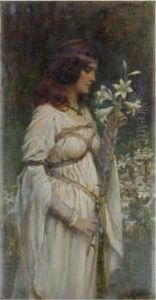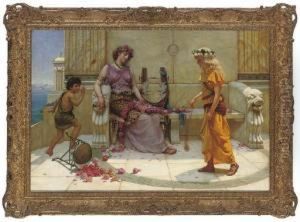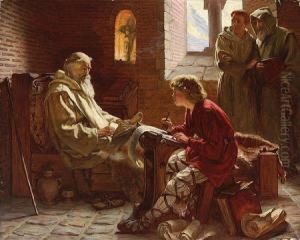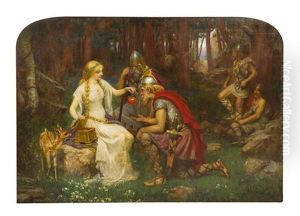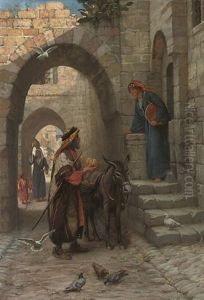James Doyle Penrose Paintings
James Doyle Penrose was an Irish painter, born in Dublin on November 4, 1862, to a family with a strong artistic heritage. His father, Richard Penrose, was an amateur artist, and his mother was related to the famous Irish artist James Doyle. Penrose's early interest in art was encouraged by his family's background, and he pursued formal education in the arts.
He began his artistic training at the Royal Dublin Society's School of Art before moving to London where he continued his studies at the Royal Academy Schools. Penrose's education was comprehensive, covering a variety of techniques and subjects, which was reflected in the versatility of his later work.
Penrose's artistic career was marked by his skill in both portraiture and historical scenes. He was well-regarded for his ability to capture the likeness and character of his subjects in his portraits. Besides portraiture, Penrose also had a keen interest in religious and mythological themes, often imbuing his compositions with a sense of drama and narrative.
Throughout his life, Penrose remained an active participant in the art community. His work was exhibited at prestigious institutions, including the Royal Academy in London and the Royal Hibernian Academy in Dublin. Penrose was not just limited to painting; he also engaged in illustrating books, which helped to broaden his artistic reach and reputation.
James Doyle Penrose was a member of various artistic societies, and his contributions to the art world were recognized by his peers. Despite the recognition he received during his lifetime, Penrose did not achieve widespread fame and his work was somewhat overshadowed by some of his contemporaries. Nevertheless, his paintings continue to be appreciated for their craftsmanship and historical value.
Penrose's legacy lives on through his works that can be found in various collections and museums. He passed away on August 5, 1932, leaving behind a body of work that continues to be studied and appreciated by art historians and enthusiasts alike.
